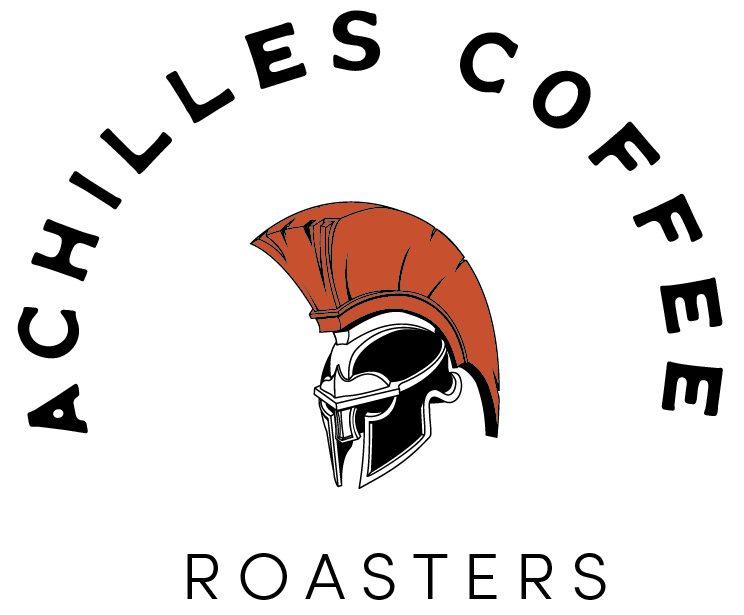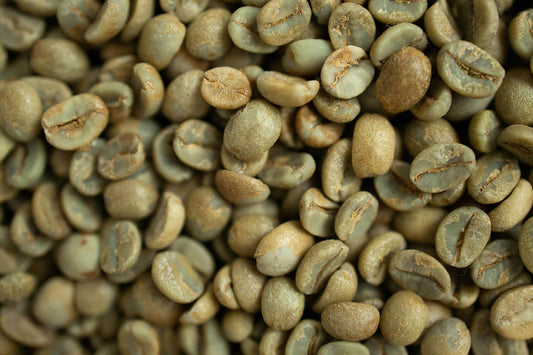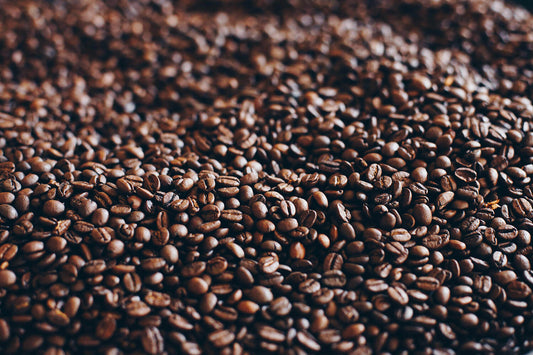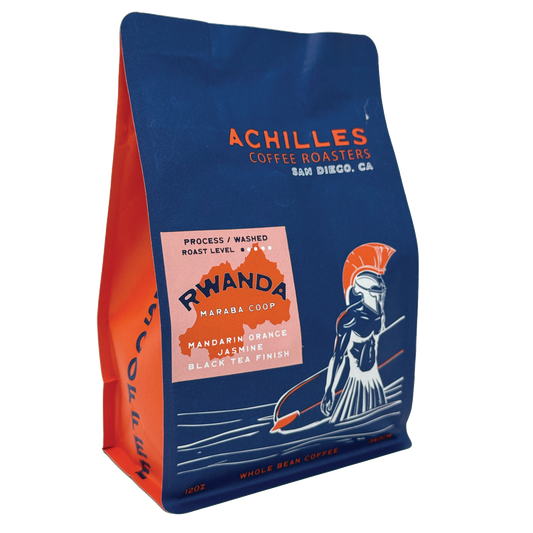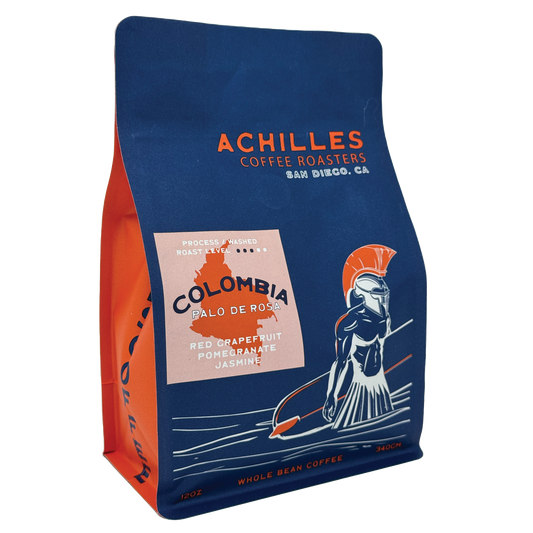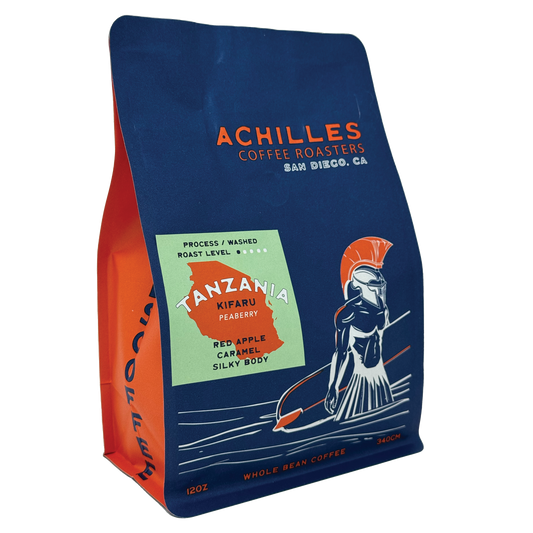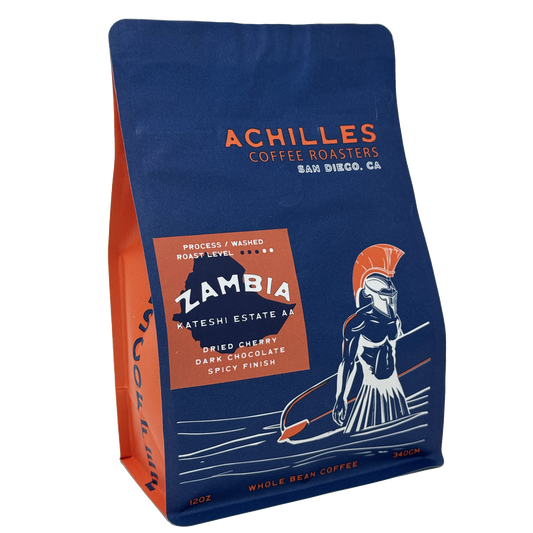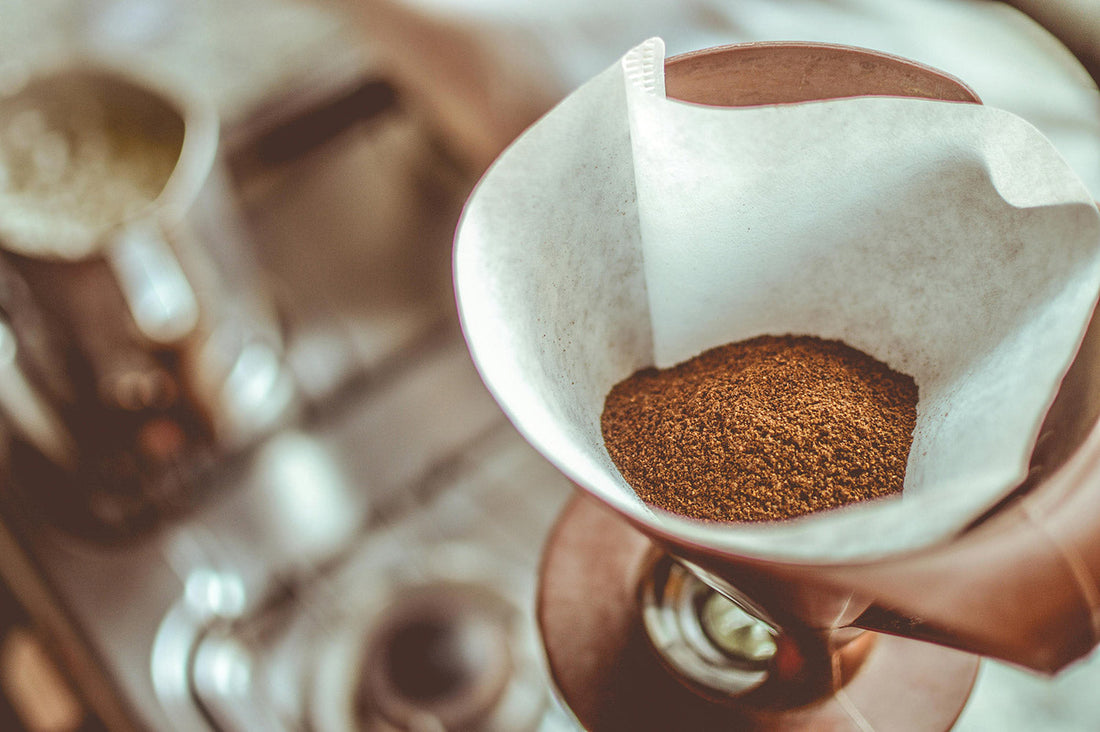
The Ultimate Grinder Showdown: From Burr to Blade
When it comes to brewing great coffee at home, no piece of equipment is as critical—or as misunderstood—as your coffee grinder. You can have the finest beans, the best espresso machine, or the perfect pour-over setup, but without a quality grind, your cup will fall flat. In this guide, we’ll break down the differences between burr and blade grinders, explore how grind consistency affects flavor, and help you choose the right grinder for your home setup.
Let’s settle the burr vs. blade debate once and for all.
Why Your Grinder Matters More Than You Think
When it comes to brewing espresso—or any coffee, really—the grinder is often overlooked in favor of flashier equipment like machines, tampers, or fancy accessories. But ask any seasoned barista or coffee professional, and they’ll tell you: your grinder may be the most important piece of gear in your entire setup.
That’s because coffee brewing is ultimately a process of extraction—the act of hot water pulling soluble compounds from ground coffee. Everything from sweetness to acidity, from mouthfeel to bitterness, comes down to how evenly and efficiently those compounds are extracted. And grind size and consistency directly control how this extraction plays out.
Let’s look at the three most critical aspects your grinder affects:
Grind size:
This determines how much surface area of the coffee is exposed to the water. Espresso requires a very fine grind—similar to table salt—to provide enough resistance for pressure-based extraction. If your grind is too coarse, water will flow through too quickly, leading to under-extraction. If it’s too fine, water may choke or stall, leading to over-extraction or uneven flow. Having a grinder that allows you to make precise, incremental adjustments is crucial for dialing in the perfect shot.
Grind consistency:
Beyond the average size of the grind, how consistent your grinder is at producing particles of that size makes a huge difference. A good espresso grinder produces mostly uniform grounds, with minimal variation between large and small particles. When grind consistency is poor—as is common with cheaper blade grinders—you end up with a mix of fine powder (which over-extracts) and large chunks (which under-extract). This unevenness creates conflicting flavors in the cup, making it harder to achieve clarity or balance.
Uniformity of particle size (distribution):
Uniformity ensures that each coffee particle extracts at the same rate. High-end burr grinders are engineered to produce a tight distribution of particle sizes, which helps water interact with the coffee more evenly. This reduces the risk of some parts of your puck being over-extracted (which creates bitterness, astringency, and dryness) while others are under-extracted (which leads to sourness, sharpness, or a hollow body). A grinder with poor distribution will almost always yield a cup that tastes muddled, unbalanced, or unpredictable.
Why inconsistency ruins your espresso:
Espresso is highly concentrated—you're extracting intense flavor compounds in a matter of 25 to 30 seconds. That leaves little room for error. If your grind isn’t consistent, even slight variations in size can skew the entire extraction process. The smaller particles will give up their flavors too quickly and create harsh or dry notes, while the larger ones won’t have time to contribute anything meaningful, leaving the shot sour or watery.
The end result? A muddy, unbalanced cup that doesn’t reflect the quality of your beans, your machine, or your technique.
What kind of grinder do you need for espresso?
At a minimum, you should be using a burr grinder, not a blade grinder. Burr grinders crush the beans between two burrs (flat or conical), producing much more consistent particle sizes. For espresso, look for a grinder with stepless adjustment or very fine grind settings, so you can make micro-adjustments as needed to dial in your shot.
Manual burr grinders can be an excellent budget-friendly option, especially for those who don’t mind a bit of extra effort. But if convenience is key or you’re pulling multiple shots per day, an electric burr grinder with a high-quality motor and precision adjustment will serve you better in the long run.
In short:
If you're serious about espresso, your grinder shouldn't be an afterthought. It's the foundation of everything that follows. Without a grinder that produces consistent, uniform grounds, even the best espresso machine can't produce great results. Investing in a high-quality grinder is one of the most impactful upgrades you can make to your home coffee setup—and your taste buds will thank you.
Your grinder determines whether your coffee sings or sinks.
Blade Grinders: The Basics
If you're just getting started with home brewing or working with a tight budget, blade grinders might seem like an attractive option. They're widely available, simple to operate, and cost a fraction of more advanced burr grinders. However, when it comes to grind quality and consistency—especially for espresso or pour-over—blade grinders come with significant limitations.
How Blade Grinders Work
Blade grinders use a rapidly spinning metal blade, much like a small propeller, to chop coffee beans into smaller pieces. The blade sits at the bottom of a small chamber, and as it spins, it shreds the beans by force. The longer you run the grinder, the finer the grounds become—but this process is imprecise and uncontrolled.
Unlike burr grinders, which crush beans between two surfaces for uniformity, blade grinders rely purely on speed and time. As a result, you get a chaotic mix of particles with no real control over size or shape.
Pros of Blade Grinders
Affordable:
Blade grinders are among the most inexpensive coffee grinders available. Many models can be found for under $30, making them accessible for beginners or casual drinkers who aren’t ready to invest in higher-end gear.
Compact:
They’re lightweight and small, making them easy to store in a cabinet or on a crowded countertop. Great for small kitchens, offices, or travel setups where space is limited.
Simple to Use:
With most models, you just add beans, close the lid, and press a button. There’s no need to learn complicated settings or deal with adjustment dials. For basic convenience, blade grinders are hard to beat.
Cons of Blade Grinders
Inconsistent Grind Size:
This is the biggest drawback. Because the blades don’t cut uniformly, the resulting grind will contain a wide range of particle sizes—from superfine powder to large chunks—all in the same batch. This inconsistency leads to uneven extraction: finer particles over-extract (creating bitterness), while larger ones under-extract (causing sourness or weak flavor).
Heat Generation:
Blade grinders operate at very high speeds, and the friction generated by the spinning blade can raise the temperature of the coffee grounds. This heat can degrade delicate aromatic compounds in the coffee, dulling the final flavor before you even start brewing.
No Real Control Over Grind Size:
Your only way to influence grind size is by pulsing the grinder or running it longer. But because beans move randomly within the chamber, there’s no guarantee they’ll be ground evenly. You can’t target a specific grind setting, making it difficult to replicate results or dial in for different brew methods.
Best Use Case for Blade Grinders
Blade grinders are best reserved for casual brewing situations where flavor precision isn’t critical. For example, they can work in a pinch for making drip coffee, French press, or cold brew—especially in environments like offices, dorms, or when traveling.
However, for espresso, pour-over, or any brew method that relies on fine-tuned extraction, blade grinders are not recommended. The lack of grind consistency will lead to poor shot quality and unpredictable flavor.
Bottom Line
Blade grinders are an affordable entry point for grinding your own coffee, and they’re undeniably convenient. But they come with serious trade-offs in grind quality, heat management, and control. If you’re serious about flavor, especially for espresso or manual brewing, upgrading to a burr grinder—even an entry-level model—will make a dramatic difference in your results.
Still, in a pinch, a blade grinder is better than using pre-ground coffee. Just be aware of its limitations—and know that it’s a stepping stone, not the destination, in your coffee journey.
Burr Grinders: The Gold Standard
If you’re serious about brewing better coffee at home, upgrading to a burr grinder is one of the most impactful decisions you can make. Whether you’re pulling espresso shots, brewing pour-over, or making a French press, burr grinders offer the consistency and control that blade grinders simply can’t match.
Burr grinders are widely regarded as the gold standard for grinding coffee because they produce uniform particle sizes, preserve flavor integrity, and allow for precise grind adjustments based on your brew method.
How Burr Grinders Work
Unlike blade grinders that chop beans with spinning blades, burr grinders crush the beans between two rough, abrasive surfaces—called burrs. One burr typically stays stationary while the other rotates, crushing the beans as they pass through. The distance between the burrs determines the grind size, and most models offer multiple (sometimes stepless) settings for precise control.
There are two primary types of burr grinders:
Flat Burr Grinders:
These use two flat, horizontal disks with teeth that face each other. Beans are crushed between the flat surfaces and dropped down vertically. Flat burrs tend to produce very consistent grinds with minimal fines, making them a favorite among professional baristas and espresso enthusiasts. However, they are usually more expensive and generate more heat during use due to the horizontal friction and higher motor speeds.
Conical Burr Grinders:
These use a cone-shaped inner burr that rotates within a stationary outer ring burr. The beans are ground vertically, from top to bottom. Conical burrs are slightly more forgiving, quieter, and tend to produce less heat than flat burrs, making them ideal for home use. They also require less frequent cleaning and are typically found in a wider range of home grinder models, from entry-level to high-end.
Pros of Burr Grinders
Consistent Grind Size:
This is the key advantage. Burr grinders create uniform coffee particles, which leads to even extraction during brewing. Consistency ensures that all of the coffee in your brew bed extracts at the same rate, reducing the risk of bitterness from over-extracted fines or sourness from under-extracted chunks. The result is a cleaner, more balanced cup.
Grind Size Control:
Most burr grinders allow you to precisely adjust the distance between the burrs, which lets you fine-tune the grind size to match any brewing method. Whether you're making espresso (which requires a very fine grind), pour-over (medium-fine), AeroPress (medium), or French press (coarse), a burr grinder gives you the ability to dial in exactly what you need. Some high-end models even offer stepless adjustment for infinite control between grind sizes.
Better Flavor and Aroma:
Because burr grinders produce a consistent grind with minimal fines and boulders, the resulting brew extracts more evenly. This leads to cleaner flavor profiles, better body, and enhanced clarity in the cup. You’ll notice more of your coffee’s subtle tasting notes—florals, fruits, chocolates, and spices—coming through when your grind is uniform.
Cons of Burr Grinders
More Expensive:
Burr grinders come at a higher upfront cost compared to blade grinders. Entry-level models start around $80–$100, while higher-end home models can range from $200 to $500 or more. However, the improvement in grind quality and the ability to adjust for different brew methods often make this a worthwhile investment.
Larger Footprint:
Because they house more components—including larger burrs, adjustment mechanisms, and often a motor—burr grinders take up more counter space. If kitchen real estate is tight, this may be a consideration. That said, there are compact burr grinder models designed specifically for home use.
More Maintenance Required:
With more moving parts and internal pathways, burr grinders need to be cleaned regularly to prevent the buildup of coffee oils and fine particles. While cleaning isn’t difficult (especially with tools like grinder brushes and vacuum attachments), it does require some upkeep compared to the simplicity of blade grinders.
Best Use Case for Burr Grinders
Burr grinders are ideal for anyone who wants to get the most out of their coffee—whether you’re just beginning to explore specialty coffee or you’re a seasoned home barista pulling daily espresso shots.
If you care about flavor clarity, want the ability to adjust grind settings for different brew methods, or simply want more control and consistency in your cup, a burr grinder is essential. It’s the cornerstone of serious home brewing.
Conical vs. Flat Burr Grinders
|
Type |
Pros |
Cons |
|
Conical Burr |
Quieter, cheaper, less heat generation |
Slightly less precise than flat burr |
|
Flat Burr |
Ultra-consistent grind, preferred for espresso |
Louder, pricier, generates more heat |
Manual vs. Electric Burr Grinders
Electric Burr Grinders
-
Great for speed and convenience
-
Ideal for daily espresso or multiple cups
-
Examples: Baratza Encore, Eureka Mignon, Fellow Ode
Manual Burr Grinders
-
More affordable (especially for precision)
-
Portable (great for travel or camping)
-
Require physical effort (especially for espresso grinds)
-
Examples: 1Zpresso J-Max, Timemore Chestnut
Tip: A quality manual burr grinder often outperforms cheap electric burr grinders in grind consistency.
Grind Consistency Showdown: Burr vs. Blade
|
Feature |
Blade Grinder |
Burr Grinder |
|
Grind uniformity |
Poor |
Excellent |
|
Heat generation |
High |
Low |
|
Control over size |
Minimal |
High |
|
Flavor quality |
Inconsistent |
Balanced, clean |
|
Price |
Low |
Moderate to high |
|
Longevity |
Shorter lifespan |
Built to last |
Why Grind Size Matters
The right grind size varies by brew method:
-
Espresso: Very fine, uniform
-
Pour-over / drip: Medium-fine to medium
-
French press / cold brew: Coarse
Blade grinders struggle to produce the uniformity needed for these methods, especially espresso.
Choosing the Right Grinder for Your Home Setup
Ask yourself:
What brew method do you use most?
-
Espresso = burr grinder (flat or conical)
-
Pour-over = burr grinder (manual or electric)
-
French press = burr or, in a pinch, blade
What’s your budget?
-
Under $50: Blade grinder (but consider saving up!)
-
$100–$200: Entry-level burr grinder (e.g., Baratza Encore, Timemore Chestnut)
-
$200+: High-end burr grinder (e.g., Eureka Mignon, Fellow Ode Gen 2)
How much coffee do you brew daily?
-
Small amounts: Manual burr grinder could work well.
-
Multiple cups or espresso: Go electric.
How to Get the Best Results From Any Grinder
- Pulse blade grinders rather than holding the button down—this can reduce heat build-up and help distribute particle sizes a little better
-
Shake blade grinders mid-grind to redistribute beans.
-
For burr grinders, clean them regularly—old coffee oils can go rancid and affect flavor.
- Dial in your grind setting every time you switch beans. Different origins and roast levels extract differently.
FAQs About Coffee Grinders
Can I use a blade grinder for espresso?
Technically yes, but it’s hard to achieve the fine, even grind needed for good espresso. Expect inconsistent results.
Are burr grinders worth the investment?
Absolutely—if you care about coffee quality. A burr grinder improves every cup, no matter the method.
Do I need to clean my grinder? How often?
Yes! Clean burrs or blades every 1-2 weeks, or more often if you use dark roasts (they’re oilier).
Final Verdict: Burr Wins Every Time
While blade grinders are tempting for their low cost, they’re best for emergencies or casual use. If you truly want to unlock your coffee’s potential, investing in a burr grinder is one of the best decisions you can make. Your taste buds—and your morning ritual—will thank you.
Conclusion
When it comes to crafting exceptional coffee at home, your grinder is the foundation of flavor. Burr or blade—it’s a choice that impacts every sip. If you’re ready to elevate your coffee experience, visit Achilles Coffee Roasters in San Diego. We can help you select the perfect grinder, beans, and brewing gear for your setup.
